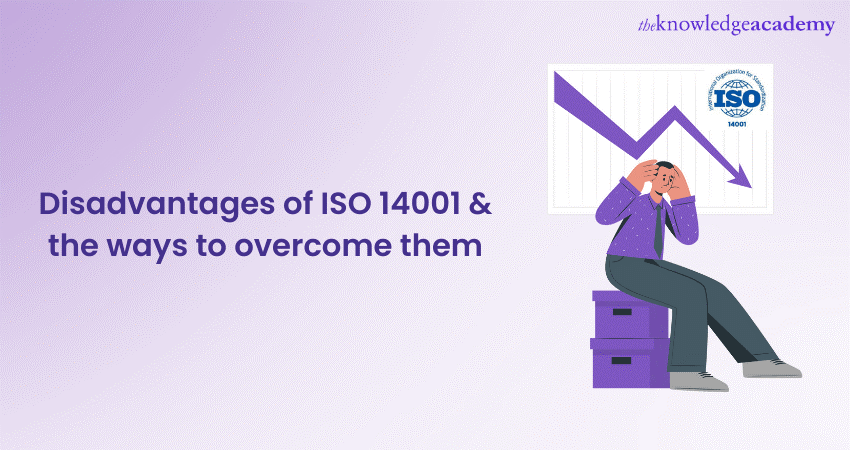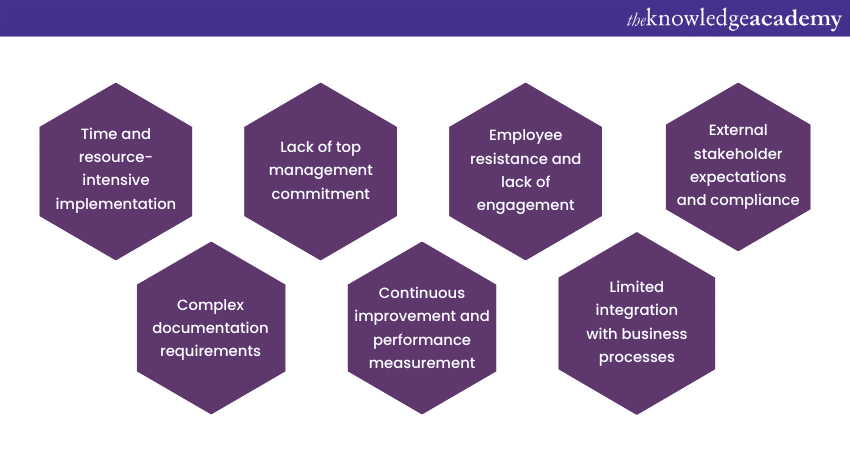We may not have the course you’re looking for. If you enquire or give us a call on 01344203999 and speak to our training experts, we may still be able to help with your training requirements.
Training Outcomes Within Your Budget!
We ensure quality, budget-alignment, and timely delivery by our expert instructors.

The International Organisation for Standardisation (ISO) 14001, within the ISO 14001 Life Cycle is a widely recognised Environmental Management System (EMS) standard. It provides a framework for organisations to establish and maintain an effective Environmental Management System. While the framework has several benefits, there are some Disadvantages of ISO 14001 that organisations must address proactively considering the ISO 14001 Context of the organisation
According to the ISO Survey of Management Systems (2022), over 420,000 ISO 14001 certificates were awarded to more than 600,000 organisations, validating their consistent compliance with ISO standards. While this statistic acknowledges the several benefits of the ISO 14001 standard, organisations may face some challenges while implementing it. Further, in this blog, we will explore the Disadvantages of ISO 14001 and provide you with practical solutions to overcome them. This will help you in ensuring the successful implementation of ISO 14001.
Table of Contents
1) The Disadvantages of the ISO 14001 standard
a) Time and resource-intensive implementation
b) Complex documentation requirements
c) Lack of top management commitment
2) Conclusion
The Disadvantages of the ISO 14001 standard
Here we have discussed the key Disadvantages of ISO 14001 and the corresponding ways to overcome them:

1) Time and resource-intensive implementation
Implementing ISO 14001 can be a time-consuming and resource-intensive process. Organisations may need to invest significant effort in developing documentation, conducting audits, and training employees. This can strain the resources of small or resource-limited organisations, leading to delays and increased costs.
Solution: Organisations can overcome this challenge by outsourcing certain tasks to external consultants or seeking assistance from experienced professionals. They can also allocate dedicated resources and provide adequate training to employees involved in the implementation process. Proper planning and realistic timelines can help streamline the implementation process and minimise disruptions to day-to-day operations.

2) Complex documentation requirements
ISO 14001 requires comprehensive documentation, including environmental policy, procedures, objectives, and records. Developing and managing these documents can be overwhelming, especially for organisations without prior experience in implementing management systems.
Solution: Organisations can simplify the documentation process by leveraging technology. Electronic document management systems and ISO 14001 Software tools can help streamline document revision, and control. Establishing clear document control procedures and providing training on their use can also enhance efficiency and ensure compliance with ISO 14001 requirements.
3) Lack of top management commitment
For ISO 14001 to be effective, it requires strong commitment and support from top management. Without the active involvement of senior leaders, employees may not take the EMS seriously, leading to poor implementation and limited environmental improvements.
Solution: To address this challenge, organisations should strive to create awareness among top management about the benefits of ISO 14001 and its alignment with corporate sustainability goals. Demonstrating the positive impact of EMS on cost savings, regulatory compliance, and brand reputation can help garner leadership support. Regular communication, management review meetings, and incorporating environmental objectives into key performance indicators can also reinforce commitment from top management.
4) Continuous improvement and performance measurement
ISO 14001 emphasises the need for continuous improvement in environmental performance. However, organisations may struggle to establish effective performance metrics, track progress, and identify areas for improvement.
Solution: Organisations can overcome this challenge by defining clear and measurable environmental objectives and targets aligned with their business strategy. Implementing Key Performance Indicators (KPIs) and tracking progress regularly can provide insights into performance trends and areas requiring attention. Conducting periodic environmental ISO 14001 audits and involving employees in identifying improvement opportunities can also facilitate continuous improvement.
Apply ISO principles within your organisation by signing up for the ISO 14001 Foundation Course now!
5) Employee resistance and lack of engagement
One common challenge in implementing ISO 14001 is resistance from employees who may perceive it as an additional burden or unnecessary paperwork. Lack of engagement can hinder the successful adoption and implementation of the Environmental Management System.
Solution: To address this challenge, organisations should focus on creating a culture of environmental awareness and engagement. This can be achieved through effective communication and employee training programs. Engage employees by explaining the benefits of ISO 14001, involving them in the development of environmental objectives, and providing regular feedback on their contributions. Recognising and rewarding employee efforts towards environmental improvement can also boost engagement and motivation.
6) Limited integration with business processes
Another challenge organisations face is the limited integration of ISO 14001 with their existing business processes. The Environmental Management System may not receive the necessary attention and support if it is seen as separate from core operations.
Solution: To overcome this challenge, organisations should strive to integrate ISO 14001 into their overall business strategy. Identify opportunities to align environmental objectives with the organisation's mission, vision, and values. Ensure that environmental considerations are embedded in key decision-making processes and incorporate them into the organisation's risk management framework. By integrating the EMS into day-to-day operations and decision-making, organisations can foster a holistic approach to sustainability and ensure its long-term success.
7) External stakeholder expectations and compliance
Organisations may face challenges in meeting the expectations of external stakeholders and complying with ever-evolving environmental regulations. Failure to address these concerns can result in reputational damage and legal implications.
Solution: To tackle this challenge, organisations should proactively engage with external stakeholders, such as regulatory authorities, local communities, and customers. Stay updated on relevant environmental regulations and ensure compliance through regular monitoring and internal audits. Collaborate with stakeholders to understand their expectations and address their concerns. Establishing partnerships with suppliers and relevant stakeholders can help meet shared sustainability goals. Organisations can build trust, enhance their reputation, and mitigate potential risks by actively engaging with external stakeholders following ISO 14001 principles that address both risks and opportunities in environmental management.
Conclusion
Organisations can overcome the disadvantages of ISO 14001 Version 2004 vs 2015 by adopting practical solutions discussed in this blog discussed in this blog. They can streamline the implementation process and reduce their operations' burden by allocating resources, leveraging technology, and seeking external assistance when needed. Furthermore, integrating the Environmental Management System with business processes and proactive engagement with external stakeholders also contribute to long-term success.
Implement ISO principles to acquire environmentally friendly organisational standards by signing up for ISO 14001 Training Courses now!
Frequently Asked Questions
Upcoming Health & Safety Resources Batches & Dates
Date
 ISO 14001 Foundation Certification
ISO 14001 Foundation Certification
Mon 21st Oct 2024
Mon 6th Jan 2025
Mon 7th Apr 2025
Mon 4th Aug 2025
Mon 3rd Nov 2025







 Top Rated Course
Top Rated Course


 If you wish to make any changes to your course, please
If you wish to make any changes to your course, please


